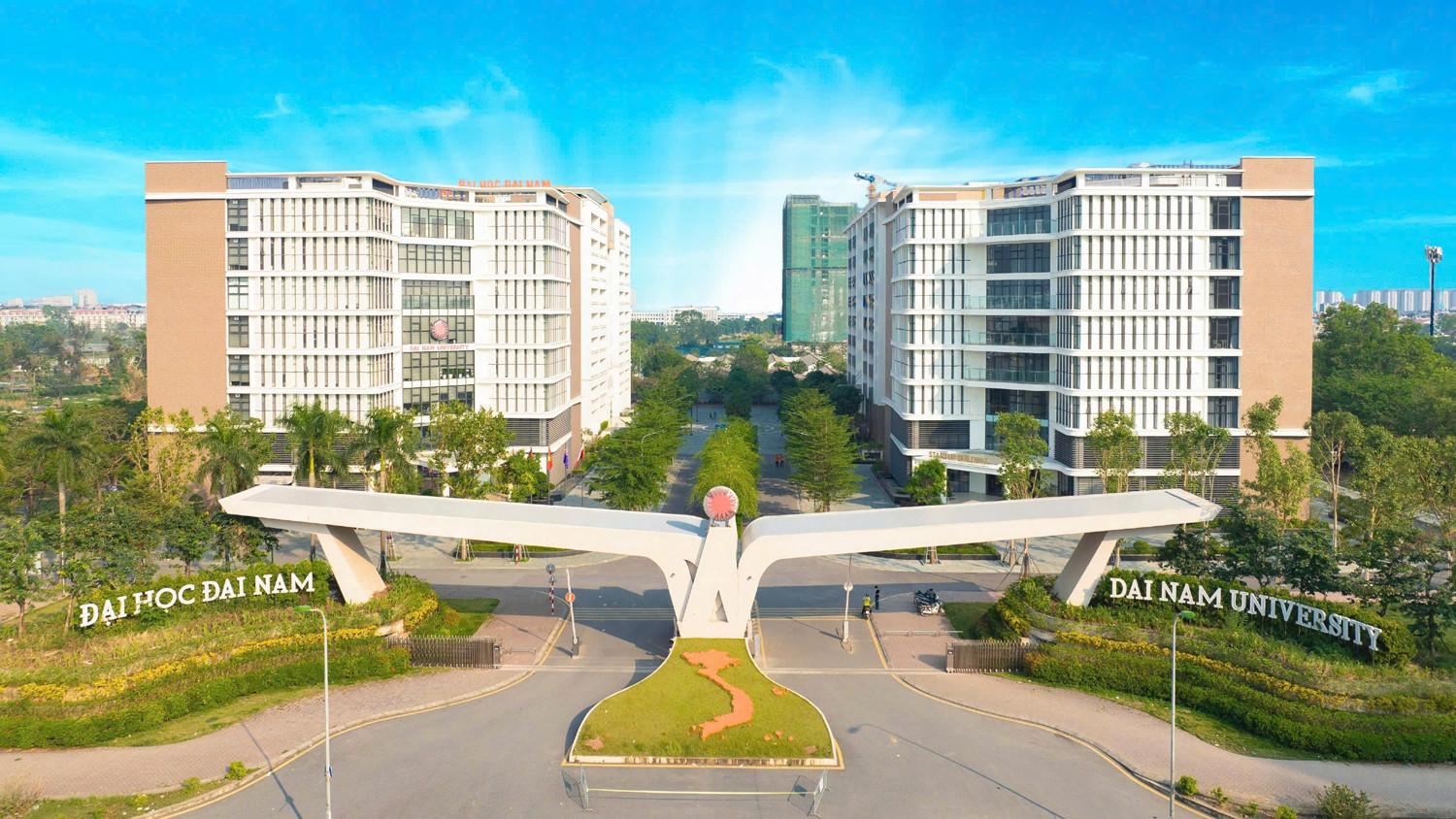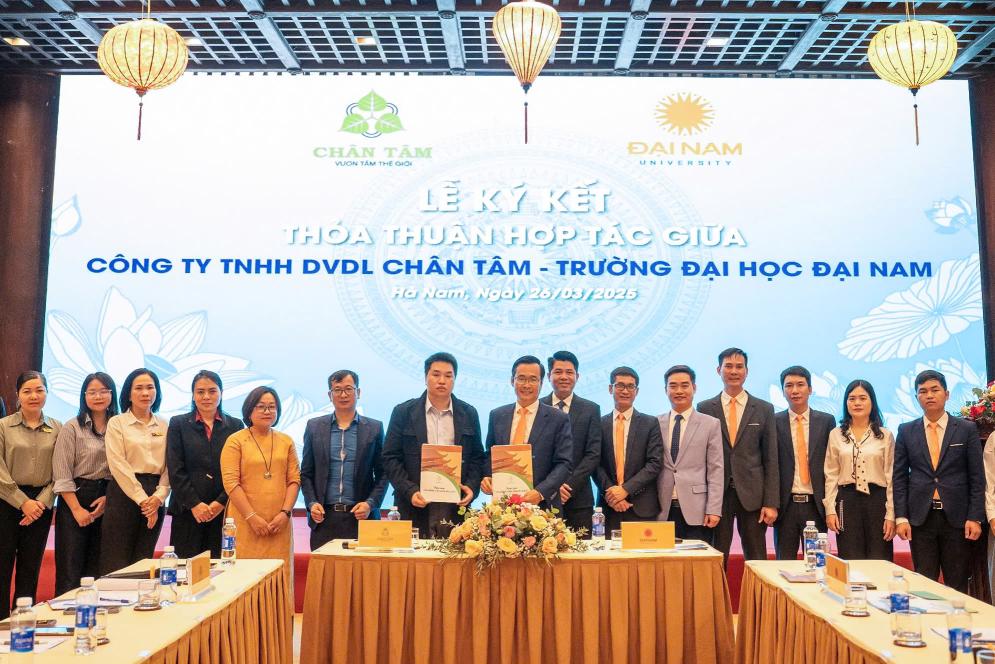Even without the US, TPP is still a good opportunity for Vietnam
Posted date 07/04/2017
2.599 view

On February 4, 2016, the TPP Agreement was officially signed in Auckland - New Zealand with the participation of all 12 member countries, including the world's two leading economic powers, the United States and Japan. However, up to now, the United States has withdrawn from the TPP Agreement. This event is considered a major step forward for the global economy.
MSc. Trinh Thi Minh Nguyet
Lecturer of Faculty of Finance and Banking
On February 4, 2016, the TPP Agreement was officially signed in Auckland - New Zealand with the participation of all 12 member countries, including the world's two leading economic powers, the United States and Japan. However, up to now, the United States has withdrawn from the TPP Agreement. This event is considered a major step forward for the global economy.
The TPP Agreement, also known as the Trans-Pacific Partnership Agreement (TTP in English stands for Trans-Pacific Partnership ), is a free trade agreement aimed at integrating the economies of countries in the Asia-Pacific region. With its important role and wide influence, the TPP is also considered the "Agreement of the 21st Century". The TPP Agreement is not simply an FTA on regional trade liberalization, but also a comprehensive agreement that addresses topical issues and profound social significance such as labor and environmental standards, intellectual property, competition, transparency, government procurement, etc.
Lecturer of Faculty of Finance and Banking
On February 4, 2016, the TPP Agreement was officially signed in Auckland - New Zealand with the participation of all 12 member countries, including the world's two leading economic powers, the United States and Japan. However, up to now, the United States has withdrawn from the TPP Agreement. This event is considered a major step forward for the global economy.
The TPP Agreement, also known as the Trans-Pacific Partnership Agreement (TTP in English stands for Trans-Pacific Partnership ), is a free trade agreement aimed at integrating the economies of countries in the Asia-Pacific region. With its important role and wide influence, the TPP is also considered the "Agreement of the 21st Century". The TPP Agreement is not simply an FTA on regional trade liberalization, but also a comprehensive agreement that addresses topical issues and profound social significance such as labor and environmental standards, intellectual property, competition, transparency, government procurement, etc.
.png)
Mr. Trump signed an executive order withdrawing the US from the TPP.
According to the assessment of Professor Peter A. Petri - Brandeis University (USA), Vietnam will be the country that benefits the most when joining TPP. Joining TPP with 11 members, Vietnam's GDP can increase by 35.7 billion USD by 2025 if the domestic manufacturing industry meets the technical barriers of the partners. Joining TPP will bring Vietnam many basic opportunities and advantages, which are:
First , expand export markets, especially agricultural export markets.
In 2014, Vietnam's exports to TPP members reached 58.41 billion USD, accounting for a relatively high proportion of Vietnam's total export turnover. In trade relations with TPP countries, Vietnam is in a position of a large trade surplus, with a trade surplus in 7/11 TPP markets (about 24.12 billion USD in 2014 and 11.23 billion USD in the first 6 months of 2015). Import tax on many types of goods will be reduced to 0%, which will be a strong boost for exports, positively impacting people's income, improving the competitiveness of export goods, and increasing export turnover. TPP will help Vietnam's garment and footwear export turnover reach 16.5 billion USD before 2025. If Vietnam joins TPP, its exports and GDP can increase by 68 billion USD and 36 billion USD, or 28.4% and 10.5%, respectively, in 2025 compared to the scenario if it does not join TPP.
Vietnam is a country with strengths in agriculture with favorable natural conditions, capable of producing agriculture all year round. Signing the TPP will promote investment from countries in the bloc into Vietnam, creating opportunities for Vietnam to exploit its advantages and potential in agriculture.
Second, deeper integration into the world financial market and opportunities for expanding investment
The level of openness of Vietnam’s financial services market is still low. Joining the TPP will help Vietnam integrate more deeply into the world financial market. International investment flows into Vietnam will also increase sharply, facilitating the banking system to increase liquidity and access international capital sources at lower costs.
However, due to the limitations of the Vietnamese banking system, access to banking services remains low compared to some countries in the region and the world. The ratio of branches and transaction offices per 100,000 Vietnamese people is 3.17, much lower than Thailand's 11.7, Indonesia's 9.59 and OECD countries' 27. The distribution of branches and transaction offices in Vietnam is uneven, concentrated only in large cities. This increases the opportunity for international banks to access customer market share, affecting the potential market of domestic banks.
Joining the TPP will certainly boost investment from other countries in Vietnam. Direct investment from TPP countries in Vietnam reached 100.4 billion USD in registered capital of valid projects (1988-2015), accounting for nearly 40% of Vietnam's total FDI capital. Capital flows from many TPP member countries with high levels of development can bring significant spillover benefits in terms of technology and management skills, or higher value-added service sectors. The increase in investment will help promote the formation of fixed capital and create opportunities for Vietnam to exploit potential advantages in agriculture. Domestic and foreign textile and garment companies will increase investment in Vietnam to take advantage of the opportunity to enjoy low export taxes in the TPP. Joining the TPP will open up opportunities to attract investment, cooperate with other countries to modernize production, improve product quality, and participate more deeply in the global production chain.
Third, create conditions for equal competition among businesses.
By joining the TPP, state-owned enterprises will no longer enjoy preferential treatment or privileges in terms of access to capital and protection rights. This will create opportunities for private enterprises to develop and compete equally, while also creating pressure to promote state-owned enterprises to proactively improve their competitiveness. However, the scope of application of rules for state-owned enterprises is only in the field of goods and not in the service sector, meaning that governments of TPP countries are not limited in supporting state-owned enterprises to provide services in the domestic market. However, state-owned enterprises operating in fields with large capital sources and high expectations for restructuring (finance, telecommunications, health care, education, distribution, etc.) in Vietnam are not affected by the TPP, so the pressure for innovation is not high. Joining the TPP will help Vietnam trade more freely, reduce state participation in the economy, and make the economy more transparent.
Fourth, promote the development of supporting industries
The TPP agreement will significantly reduce import taxes on Vietnamese garment products entering the markets of member countries, thereby increasing competition with similar goods from other countries such as China, India, Indonesia or Thailand. In addition, TPP also stipulates that Vietnamese goods must use domestically produced materials or imported from TPP members. However, in the past, Vietnam has largely depended on importing raw materials from countries and territories outside the TPP (China, Korea, Taiwan and some countries in the ASEAN region). This will promote the development of the supporting industry as well as expand the production scale of Vietnamese enterprises. At the same time, it will help reduce dependence on China, which is currently supplying a lot of raw materials for the Vietnamese textile and garment industry.
Currently, Vietnam's textile and garment supporting industry is weak, so raw materials and even some fabrics must be imported from abroad, mostly from countries outside the TPP, such as China, Korea, Taiwan, etc. There are almost no alternative sources from TPP participating countries. Therefore, the US's "yarn forward" origin requirement applied in the TPP will both facilitate the development of the supporting industry but also cause initial difficulties for Vietnamese enterprises.
Although the US has withdrawn from the TPP, and although the TPP has not come true, alternative mechanisms are still being discussed by the countries. For Vietnam, it is basically still in the process of integration. Vietnam can completely join with the remaining countries of the TPP negotiating group to discuss and adjust the agreement so that they can be implemented together. The view of the Vietnamese Government is that even without the participation of the US, Vietnam will still be determined to pursue the TPP agreement to the end as well as have the right and timely solutions and actions to take advantage of the good opportunities and overcome the challenges that this agreement brings.
First , expand export markets, especially agricultural export markets.
In 2014, Vietnam's exports to TPP members reached 58.41 billion USD, accounting for a relatively high proportion of Vietnam's total export turnover. In trade relations with TPP countries, Vietnam is in a position of a large trade surplus, with a trade surplus in 7/11 TPP markets (about 24.12 billion USD in 2014 and 11.23 billion USD in the first 6 months of 2015). Import tax on many types of goods will be reduced to 0%, which will be a strong boost for exports, positively impacting people's income, improving the competitiveness of export goods, and increasing export turnover. TPP will help Vietnam's garment and footwear export turnover reach 16.5 billion USD before 2025. If Vietnam joins TPP, its exports and GDP can increase by 68 billion USD and 36 billion USD, or 28.4% and 10.5%, respectively, in 2025 compared to the scenario if it does not join TPP.
Vietnam is a country with strengths in agriculture with favorable natural conditions, capable of producing agriculture all year round. Signing the TPP will promote investment from countries in the bloc into Vietnam, creating opportunities for Vietnam to exploit its advantages and potential in agriculture.
Second, deeper integration into the world financial market and opportunities for expanding investment
The level of openness of Vietnam’s financial services market is still low. Joining the TPP will help Vietnam integrate more deeply into the world financial market. International investment flows into Vietnam will also increase sharply, facilitating the banking system to increase liquidity and access international capital sources at lower costs.
However, due to the limitations of the Vietnamese banking system, access to banking services remains low compared to some countries in the region and the world. The ratio of branches and transaction offices per 100,000 Vietnamese people is 3.17, much lower than Thailand's 11.7, Indonesia's 9.59 and OECD countries' 27. The distribution of branches and transaction offices in Vietnam is uneven, concentrated only in large cities. This increases the opportunity for international banks to access customer market share, affecting the potential market of domestic banks.
Joining the TPP will certainly boost investment from other countries in Vietnam. Direct investment from TPP countries in Vietnam reached 100.4 billion USD in registered capital of valid projects (1988-2015), accounting for nearly 40% of Vietnam's total FDI capital. Capital flows from many TPP member countries with high levels of development can bring significant spillover benefits in terms of technology and management skills, or higher value-added service sectors. The increase in investment will help promote the formation of fixed capital and create opportunities for Vietnam to exploit potential advantages in agriculture. Domestic and foreign textile and garment companies will increase investment in Vietnam to take advantage of the opportunity to enjoy low export taxes in the TPP. Joining the TPP will open up opportunities to attract investment, cooperate with other countries to modernize production, improve product quality, and participate more deeply in the global production chain.
Third, create conditions for equal competition among businesses.
By joining the TPP, state-owned enterprises will no longer enjoy preferential treatment or privileges in terms of access to capital and protection rights. This will create opportunities for private enterprises to develop and compete equally, while also creating pressure to promote state-owned enterprises to proactively improve their competitiveness. However, the scope of application of rules for state-owned enterprises is only in the field of goods and not in the service sector, meaning that governments of TPP countries are not limited in supporting state-owned enterprises to provide services in the domestic market. However, state-owned enterprises operating in fields with large capital sources and high expectations for restructuring (finance, telecommunications, health care, education, distribution, etc.) in Vietnam are not affected by the TPP, so the pressure for innovation is not high. Joining the TPP will help Vietnam trade more freely, reduce state participation in the economy, and make the economy more transparent.
Fourth, promote the development of supporting industries
The TPP agreement will significantly reduce import taxes on Vietnamese garment products entering the markets of member countries, thereby increasing competition with similar goods from other countries such as China, India, Indonesia or Thailand. In addition, TPP also stipulates that Vietnamese goods must use domestically produced materials or imported from TPP members. However, in the past, Vietnam has largely depended on importing raw materials from countries and territories outside the TPP (China, Korea, Taiwan and some countries in the ASEAN region). This will promote the development of the supporting industry as well as expand the production scale of Vietnamese enterprises. At the same time, it will help reduce dependence on China, which is currently supplying a lot of raw materials for the Vietnamese textile and garment industry.
Currently, Vietnam's textile and garment supporting industry is weak, so raw materials and even some fabrics must be imported from abroad, mostly from countries outside the TPP, such as China, Korea, Taiwan, etc. There are almost no alternative sources from TPP participating countries. Therefore, the US's "yarn forward" origin requirement applied in the TPP will both facilitate the development of the supporting industry but also cause initial difficulties for Vietnamese enterprises.
Although the US has withdrawn from the TPP, and although the TPP has not come true, alternative mechanisms are still being discussed by the countries. For Vietnam, it is basically still in the process of integration. Vietnam can completely join with the remaining countries of the TPP negotiating group to discuss and adjust the agreement so that they can be implemented together. The view of the Vietnamese Government is that even without the participation of the US, Vietnam will still be determined to pursue the TPP agreement to the end as well as have the right and timely solutions and actions to take advantage of the good opportunities and overcome the challenges that this agreement brings.
Latest article
View all Posts
Related articles
See all related Articles
Register for admission consultation 2025
Dai Nam University offers admissions to
36 academic programs
across a diverse range of disciplines, including Healthcare, Engineering and Technology, Economics and Business, and Social Sciences and Humanities.
Register now to secure
scholarships and tuition support worth up to 55 billion VND
scholarships and tuition support worth up to 55 billion VND

Register now to secure
scholarships and tuition support worth up to 55 billion VND
scholarships and tuition support worth up to 55 billion VND








